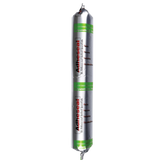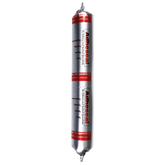Rock On: A guide on Stones interaction with Adhesives and Sealants.
Stone, an age-old building material, remains central to construction and design. Revered for its natural beauty, durability, and elegance, stone plays a significant role in both historical and modern structures. In the Australian trades industry, stone's interaction with adhesives and sealants like Polyurethanes, MS, Hybrid, Silicones, Epoxies, and Resins is a complex yet intriguing subject. This blog offers an insightful exploration of stone's composition, its collaboration with various adhesives, common applications, challenges, and performance under the unique Australian environmental conditions.
Scientific Analysis of Stone
Composition and Structure
Stone is a natural mineral aggregate, often comprising minerals like quartz, feldspar, and mica. Its structure varies, leading to different types such as granite, marble, limestone, and slate.
Interaction with Adhesives
The porous or dense nature of stone affects how it bonds with adhesives. Considerations include:
- Polyurethanes: Suitable for porous stones, offering flexibility. Used in building façades and stone cladding.
- MS: Excellent for dense stones, providing strong adhesion. Common in structural bonding and anchoring.
- Hybrid: Adaptable to various stone types, ensuring durable bonds. Used for both interior and exterior applications, such as flooring and wall installations.
- Silicones: Ideal for outdoor applications, resisting weathering. Utilized in window sealing and outdoor stone sculptures.
- Epoxies: Used for heavy-duty bonding, especially in industrial settings. Employed in bridge construction and heavy stone installations.
- Resins: Common in artistic and decorative applications. Used for decorative stone inlays and artistic stone creations.
Australian Stone Varieties
The Australian landscape offers unique stone varieties, each with specific adhesive considerations. Sandstone, bluestone, and Australian granite are prominent examples.
Thermal and Mechanical Properties
Stone's thermal expansion, compressive strength, and porosity are key factors affecting adhesive selection and application, especially in fluctuating Australian climate conditions.
Common Applications and Usage
Construction and Architecture
Stone's natural elegance and durability make it a preferred material for building façades, flooring, countertops, and monuments. Different adhesives ensure bonds that withstand the Australian environment.
Waterproofing and Sealing
Stone surfaces, especially in outdoor settings, require waterproofing. Adhesives like Silicones and Polyurethanes provide weather-resistant seals.
Industrial Applications
In industrial settings, stone's heavy-duty applications are facilitated by Epoxies and MS, ensuring robust and resilient structures.
Artistic and Decorative Uses
The beauty of stone is showcased in sculptures, inlays, and decorative elements. Resins and Hybrid adhesives allow for creative and aesthetic applications.
Trades and Specialized Fields
Stone is integral to various trades like masonry, tiling, and civil construction. The choice of adhesive depends on the specific requirements of each trade and the type of stone used.
Challenges and Considerations
Material Compatibility
Understanding the compatibility between stone and adhesives is crucial. For example, using Epoxies with porous limestone might lead to staining and discoloration, whereas Polyurethanes might provide a more flexible bond.
Environmental Factors
The Australian climate, with its intense UV exposure in desert areas or sea salt in coastal regions, can affect adhesive performance. A Silicone adhesive might be preferred for coastal applications due to its resistance to saltwater corrosion.
Surface Preparation
Proper cleaning, priming, and treatment of stone surfaces are vital. Inadequate preparation of a granite surface before applying MS adhesive might lead to weak bonds, compromising the structural integrity of a building façade.
Regulatory Compliance
Compliance with Australian standards ensures safety and quality. Failure to meet VOC regulations in a commercial building project using Resins might result in legal challenges and project delays.
Risks of Inappropriate Adhesive Use
Using inappropriate adhesives can lead to various issues:
- Structural Weaknesses: Incorrect adhesive with sandstone might cause early bond failure in structural elements.
- Aesthetic Degradation: Incompatible adhesive with marble might result in visible seams and discoloration.
- Increased Maintenance Costs: Failure to match adhesive and stone type in flooring might necessitate frequent repairs.
- Potential Safety Hazards: Misuse of adhesive in heavy stone installations in bridges might pose serious safety risks.
Key Takeaways
- Material Compatibility: Understanding the interaction between stone and adhesives like Polyurethanes, MS, Hybrid, Silicones, Epoxies, and Resins is vital for successful applications.
- Environmental Factors: Adhesives must be chosen considering the unique Australian climate, including UV exposure, temperature, and coastal conditions.
- Surface Preparation: Proper preparation ensures optimal bonding, affecting longevity and aesthetics.
- Regulatory Compliance: Adhering to Australian standards is essential for safety, quality, and sustainability.
- Risks of Inappropriate Adhesive Use: Incorrect adhesive selection and application can lead to structural, aesthetic, and safety issues, with potential legal and financial implications.




